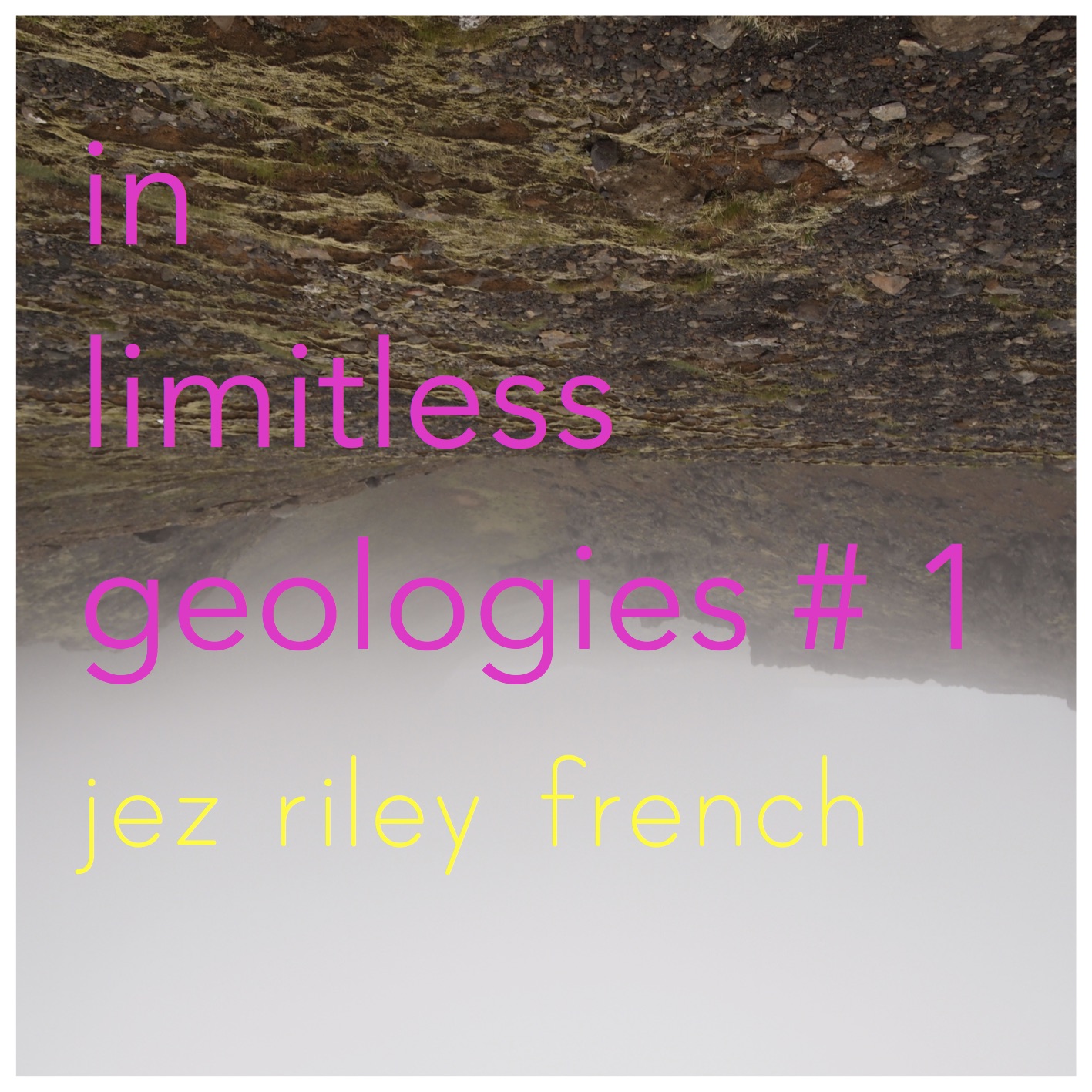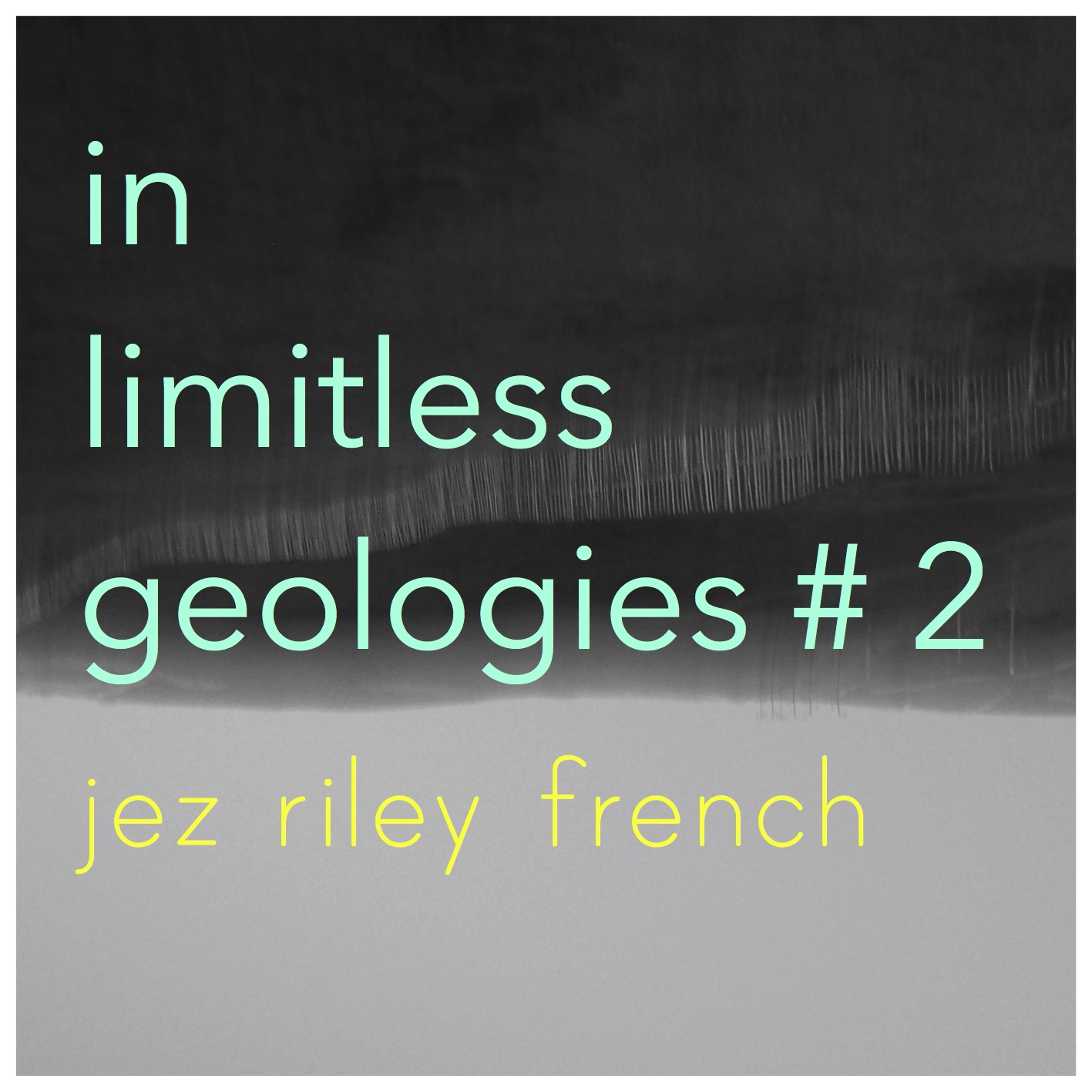

preparing for release - early 2023
a sensory
faded under
resonant, regained
as a connect
It is possible to sense the physical impact of infrasound, though we learn to ignore or filter out a vast range of the frequencies, further limited by our physical auditory capacities, paying attention only when they become disputed or disruptive. We sense the odd, the out of place, the uncomfortable. Equally we pacify that which we perceive as pleasant, the urge to find some kind of auditory other, an imposed reduction of reality, some idea of quiet that is at odds with the sonic density and complexity of environments at all times.
I’ve been listening to these traces for some years now, sometimes using them in installations or compositions, waiting for them to settle. The two pieces, ‘in limitless geologies’, began with the title, from my daughter, the artist Pheobe riley Law. I thought about those three words for a long time also. About their shape. The result are pieces that are slow moving, quiet. I keep listening.
Pieces in this series include traces of infrasound recordings made using JrF adapted industrial geophones and software, along with a hacked recorder. The compositions also include elements of guitar, synthesiser, tape and clear inputs, also recorded using the same adapted geophones and software.
(extract) of a conversation following the performative lecture ‘Choreograohies of Perception’
Q: How do you deal with infrasound in the field?
JrF: My practice is, essentially, the listening itself rather than the acquisiton of the sounds, so, given that unless one is listening to fairly intense vibrations, such as those from seismic events or on structures or machines, with geophones you can’t actually hear much, if anything, when at the locations themselves. I also have an intuitive way of using recorders so rarely look at the meters, but with these technologies they do at least indicate that something is being picked up by the devices.
I sit for hours listening to this non-sound and whilst there are many aspects to my interest in infrasound, the act of listening to it includes thinking about perception and how environments are reduced and controlled by the narratives we impose on them. Even the technologies we use to explore them can be framed in ways that imply a rather muscular imprint. I’m not interested in that, in the idea that the mere access to technology is the work itself. Listening, even when the sounds are inaccessible in their raw state, is where the work both develops and must question itself constantly.
Q: & when you combine it with instruments how does it change your thinking?
JrF: If I use the traces in a compositional sense then they are ‘material’. It’s also possible to use the core recording as they are, much of my work does that, in ways that mean they also aren’t ‘documentary’ per say. They’re, for me, outside borders, intended to push at such definitions. I have to say here that I actually don’t think we have any ‘field recordings’ of environments or species. All we have are traces, filtered through technologies and choices. It’s impossible, even with remote sound monitoring, to remove the human entirely, so recordings with those fixed parameters are what we have to work with, but I find it interesting to think about how these often unquestioned norms might still be influencing our understanding of and relationship to environments, and indeed to sound itself.
For the compositions I’m using the raw geophone recordings as both a central sound and as a way to adjust the software I’m using as a filter for the instruments; guitar, synthesiser, tape and clear inputs. Although i’ve been working with adapted geophones for quite a few years now, I still find it hard to fully explain what I find alluring about that sense of a performed or environmental sound being enveloped by infrasonic frequencies.